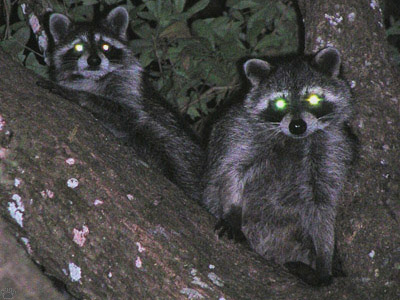
Northern raccoons (Procyon lotor), Highlands Hammock State Park. |
Florida, part 8: Carnivores
There are eleven species of native carnivores in peninsular Florida. I spend a lot of time outdoors, but I still haven't managed to see some of them.

Northern raccoon, J. N. Ding Darling National Wildlife Refuge. |
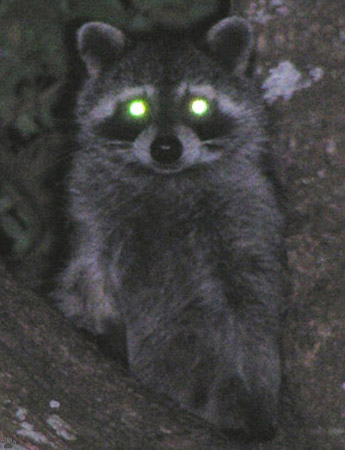
Northern raccoon, HHSP. |

Northern raccoon, JNDDNWR. |
The only really easy species to see is the raccoon. Unlike in the North, there it was originally confined to riparian forests, in Florida it inhabits all kinds of woodland, including mangroves and shrubs, as well as gardens and cities. |

Northern raccoon, HHSP. |
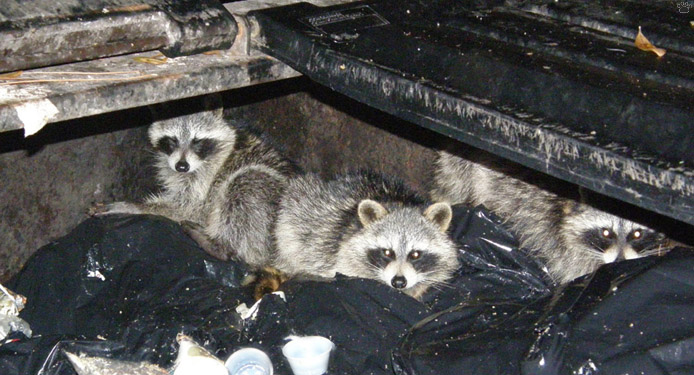
Raccoons in a dumpster, HHSP. |
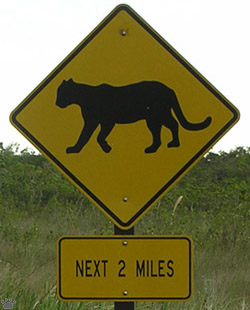
Road sign, Everglades National Park. |
The rarest mammal of the peninsula is Florida panther, a subspecies of the cat known elsewhere as cougar, puma or mountain lion. There is only a hundred of them left in the wild, and the numbers grow very slowly despite legal protection. There isn't much habitat left in southern Florida, and every year a few panthers get killed by cars. Six females from Texas has been released in Florida to prevent the effects of inbreeding in the small population. |
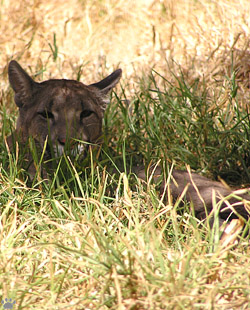
Florida panther (Felis concolor coryi), ENP. |
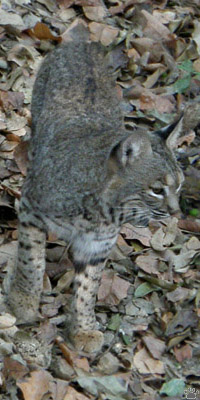 |
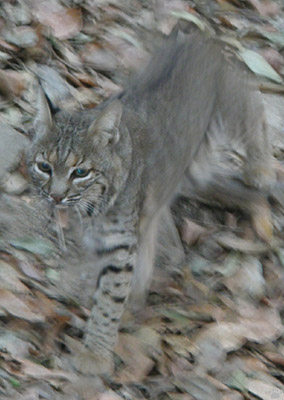 |
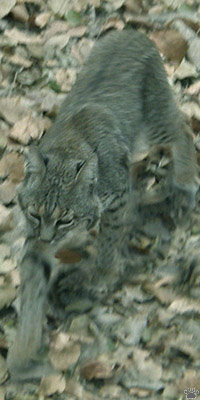 |
| Bobcat (Felis rufus), Fakahatchee Strand State Preserve. |

Gray fox (Urocyon cinereoargenteus), Ocala National Forest. |
Historically, the only two canids in Florida were red wolf and gray fox. Red wolf is now extinct in the Peninsula. Its niche is taken over by the coyote. Red fox is also a recent arrival. Both are still very rare in the south. |
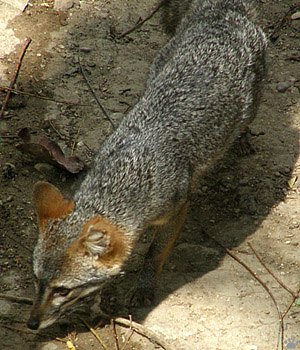
Gray fox, ONF. |
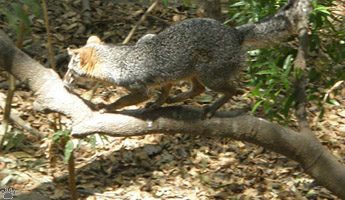 |
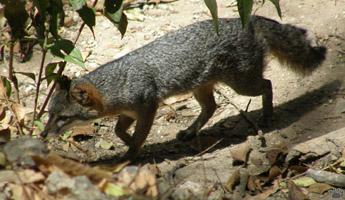 |
| Gray foxes, ONF. |
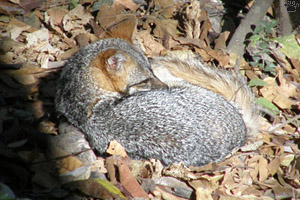
Gray fox, ONF. |
Gray fox is the most common canid. It lives in woodlands, and can climb trees very well. Its behavior is somewhat cat- like. |

Gray fox, ONF. |
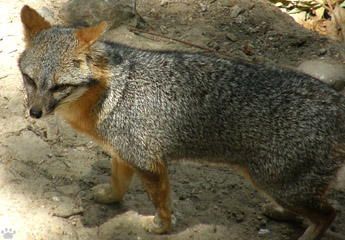 |
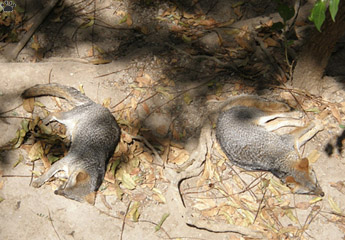 |
| Gray foxes, ONF. |

Striped skunk (Mephitis mephitis), O'Leno State Park. |
Skunks are relatively uncommon in Florida. In the south, Eastern spotted skunk is the only species; in the north, the much larger striped skunk is seen more often. |

Eastern spotted skunk (Spilogale putorius), ONF. |
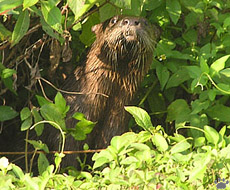 |
 |
 |
| Northern river otter (Lontra canadensis) crossing a road, ENP. |
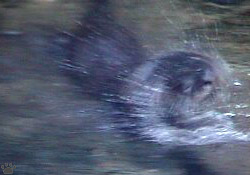 |
Northern river otter is common in Florida wetlands. It is mostly crepuscular in winter, and nocturnal in summer. While studying alligators in 2006, I had a chance to watch a group of otters for many days at one of my study sites in Big Cypress Nat'l Preserve.
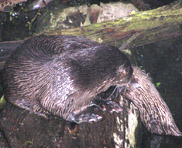
Otter grooming, BCNP. |
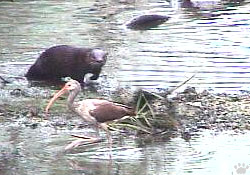 |
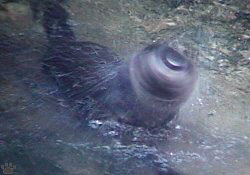 |
 |
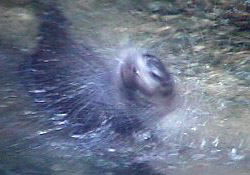 |
At first there were just two.
 |
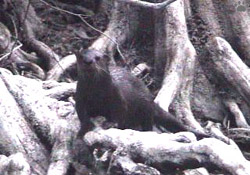 |
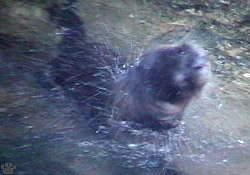 |
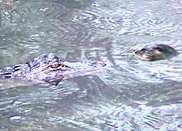
Otter playing with an alligator, BCNP. |  |
 |
As the spring drought progressed, four more moved in. Their arrival didn't cause any conflict - it looked like all six were relatives or at least had known each other. They spent time sleeping, playing, chasing fish in drying forest ponds, or looking for crayfish under tree roots. One otter enjoyed playing with a certain alligator, who always tried to catch it. But the otter was much faster than the reptile. Observing their chases was like watching a new episode of Tom & Jerry cartoon every day. |
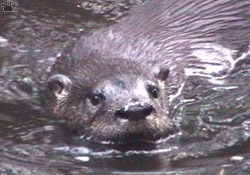 |
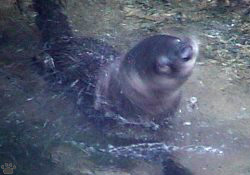
Otter shaking off water, BCNP. |

Otters hunting, BCNP. |

Northern river otters (Lontra canadensis) crossing a road, Honeymoon Island State Recreation Area. |
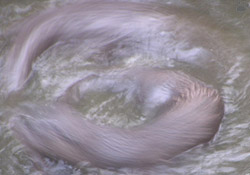 |
As the ponds dried out and there wasn't any fish left, the otters switched to digging up brown water snakes (Nerodia taxispilota) which were hiding in wet mud under tree logs and stumps. |
 |
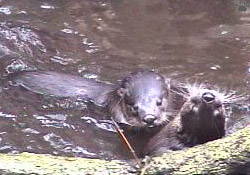 |

Otters hunting, BCNP. |
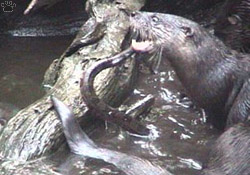 |
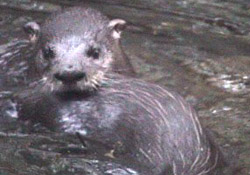 |
They would need no more than a few seconds to finish off a water snake (sequence of video frames, right), but killing a venomous water moccasin (Agkistrodon piscivorus) could take up to a minute. |
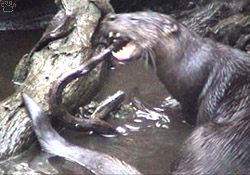 |
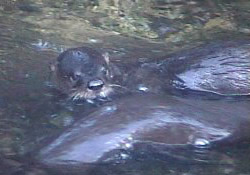 |
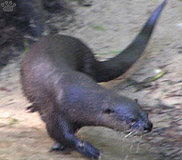
Otter hunting, BCNP. |
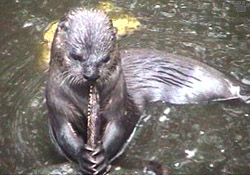 |
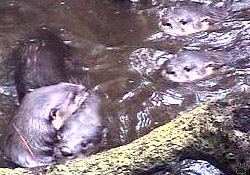 |
They also hunted all other animals they could catch: frogs, crabs, dragonfly larvae, even agile anole lizards. Once I saw an otter chase a mouse, but without success. They are also known to eat birds and baby alligators. |
 |
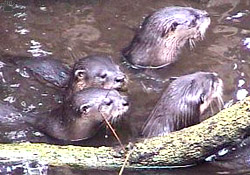 |

Otter hunting, BCNP. |
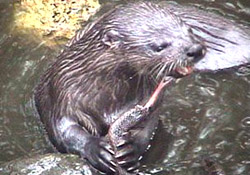 |
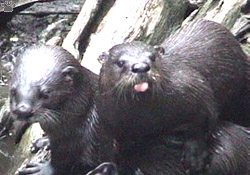 |
Otters sleep as much as house cats, but when awake they are very active, and always fun to watch. Western part of Loop Road in Big Cypress National Preserve is probably the best place in Florida to look for them. |
 |
 |
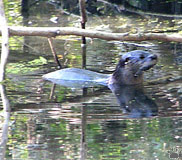 |
 |
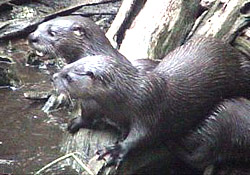 |
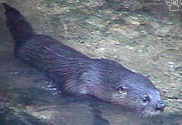
Otter hunting, BCNP. |
 |

Otters playing, BCNP. |
Otters can swim at about 10 kph (6 mph), and remain underwater for up to five minutes. In Florida, they mate in August-September. The young are born in June-July, and stay with their mother for almost a year.
|
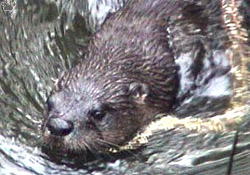
Otter dispatching a water snake, BCNP. |
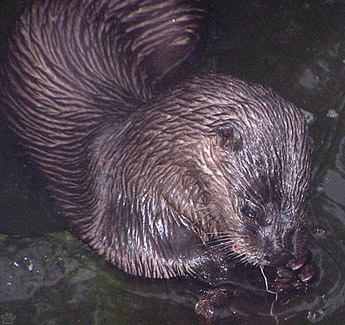 |
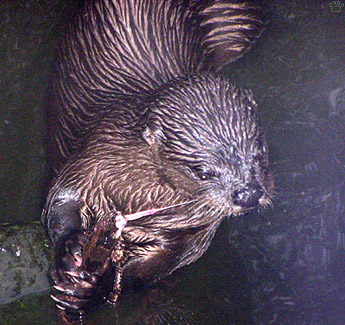 |
| Northern river otter eating a water snake, BCNP. |

Northern river otter, BCNP. |
Everglades mink (Mustela vison ever- gladensis) is much more elusive. I'm yet to see a live one - so far I've only seen one roadkill.
|
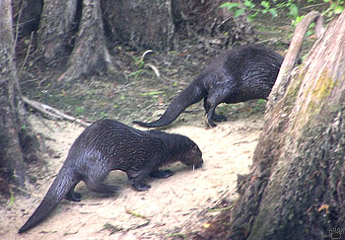
Northern river otters moving between ponds, BCNP. |
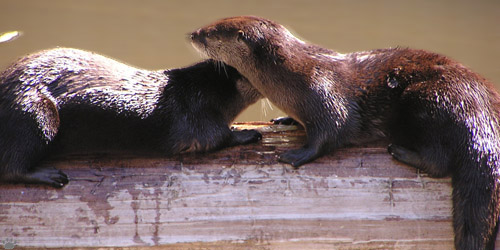
Northern river otters, Hillsborough River State Park. |
Part 9. Birds
Back to Part 7
Home
|